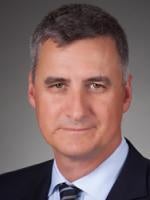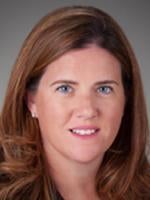Pharma and Med Device Litigation
The recent trial in a case now settled highlights the potential expansion of public nuisance claims under California law, and in large-scale public nuisance actions more broadly.
On April 24, 2023, opening arguments began in San Francisco United School District v. JUUL Labs, Inc., et al., Case No. 19-op-8177 (N.D. Cal.), sparking a momentous trial in federal court involving the San Francisco Unified School District (SFUSD) and tobacco manufacturer Altria Group, Inc. (Altria).
The trial was a bellwether in the multi-district litigation (MDL) involving approximately 5,000 cases concerning claims that the marketing of JUUL Labs, Inc. (JUUL) products caused a youth vaping crisis that warranted recovery by public entities. In re: JUUL Labs, Inc. Marketing, Sales Practices and Products Liability Litigation, Case No. 19-md-02913-WHO (N.D. Cal.).
JUUL and related individual defendants were no longer in the case at trial following a $1.2 billion settlement agreement reached in December 2022, so the sole remaining defendants at trial were affiliates of Altria, which acquired a 35% stake in JUUL in December 2018. And on May 10, a day after the plaintiffs rested their case, the parties announced a settlement of the claims against Altria as well, averting a verdict.
In the trial, Altria argued that not only did the SFUSD not have authorization to sue under California law, but even if it did, the SFUSD failed to allege any actions by Altria that caused or contributed to the alleged nuisance. Meanwhile, the SFUSD argued that it was authorized to sue under a theory of “property damage” as the result of youth vaping crisis and that aggregate evidence of youth use of e-cigarette devices was sufficient to establish that Altria’s presence in the market contributed to the nuisance risk.
The expansions of traditional public nuisance claims as advocated by SFUSD would create new liability risks for manufacturers of products in many industries.
Expansion of Authorization to Bring a Public Nuisance Claim
The SFUSD case has already expanded the scope of authorization for public entities to bring public nuisance claims under California law.
Cal Civ. Proc. Code §§ 731 and 3493 provide two separate types of authorizations for public nuisance claims: (1) by private persons whose “property is injuriously affected” or whose “personal enjoyment is lessened;” and (2) by authorized counsel for municipal bodies where a nuisance exists.
On summary judgment, Altria argued that the SFUSD was neither a “private person” under § 3493 nor authorized to bring a public nuisance claim under §§ 731 or 3494. Both Altria and the SFUSD cited to the Fifth District Court of Appeal’s decision in Rincon Band of Luiseño Mission Indians v. Flynt, 70 Cal. App. 5th 1059 (2021), with Altria arguing that it demonstrated that only parties expressly authorized under § 731 have authorization to bring public nuisance claims, and the SFUSD arguing that the case “confirmed the authority of government entities to bring public nuisance claims as a general matter.”
In a pre-trial ruling on motions for summary judgment, however, Judge William Orrick of the Northern District of California ruled “at a minimum… that SFUSD is authorized under section 731 to sue for public nuisance that damaged its property.” Judge Orrick did not rule that any government entity could bring any public nuisance action, however, and reserved for a later day the question of “how broadly ‘property’ extends”.
The record at trial would have provided the backdrop for how the court would have evaluated what property damage will qualify as recoverable under § 731. The SFUSD asserted multiple theories of damages and costs including:
- Destruction of school property by students trying to find locations to vape;
- Costs to install and repair security devices to halt student access to common vaping locations;
- Costs to develop anti-vaping training materials for staff, students, and families;
- Costs to train staff to identify vaping devices used by students; and
- Costs for staff time devoted to combatting vaping by students.
The Court would have decided the extent to which these costs will constitute “property” damage sufficient to support a public nuisance claim.
Expansion of the Definition of “Causation” of a Nuisance
The Altria-SFUSD trial is the latest example of how companies in many industries may be alleged to be liable for causing alleged public nuisances, depending on how future courts resolve a significant open question of California law concerning whether the conduct at issue satisfies the causation requirement for a public nuisance claim.
In this case, the SFUSD, relying on Senior District Judge Charles Breyer’s rulings in City and County of San Francisco v. Purdue Pharma L.P., No. 18-7591, applied the same analysis for liability for members of the supply chain of prescription opioids to Altria’s involvement in the sale of vaping devices. SFUSD argued that Altria was a “substantial factor” in contributing to the youth vaping crisis, and pointed to Altria’s alleged role in forming JUUL’s marketing strategy.
The SFUSD’s analogy to prescription opioids is through use of aggregate statistics: there, it was aggregate evidence of illegitimate opioid prescriptions, here, it was aggregate evidence of youth e-cigarette use. The SFUSD claimed that evidence is sufficient to find that Altria, as a market participant, caused the youth vaping crisis. Meanwhile, Altria pointed to a conflicting line of California cases to argue that any alleged conduct could not possibly satisfy the causation prong of a public nuisance claim. Specifically, Altria argued that rulings in a suit against opioid manufacturers from the Orange County Superior Court, California v. Purdue Pharma L.P., No. 30-2014-00725287, and a suit against firearms manufacturers from the California Court of Appeals, In re Firearm Cases, 126 Cal. App. 4th 959 (2005), each supported a finding that plaintiffs need to demonstrate an actual connection between a defendant’s conduct and the alleged harms. Altria argued that it did not invest in JUUL until after the alleged nuisance had already begun, and that the SFUSD failed to allege any actual conduct by Altria that contributed to the nuisance.
As a result of the settlement Judge Orrick will not issue a detailed ruling on the issue of causation here, significant questions about the scope of public nuisance liability remain, specifically:
- Whether liability extends to investors in companies that allegedly contributed to the nuisance even after the nuisance had already begun, and
- Whether aggregate evidence of the conditions of the nuisance is sufficient to prove causation.
Potential defendants in future public nuisance actions should be mindful of the scenario presented by this case and similar cases, and that they may have to contend with a court applying a broad definition of causation to potentially find public nuisance liability based on nothing more than evidence of presence in a market.






 />i
/>i

